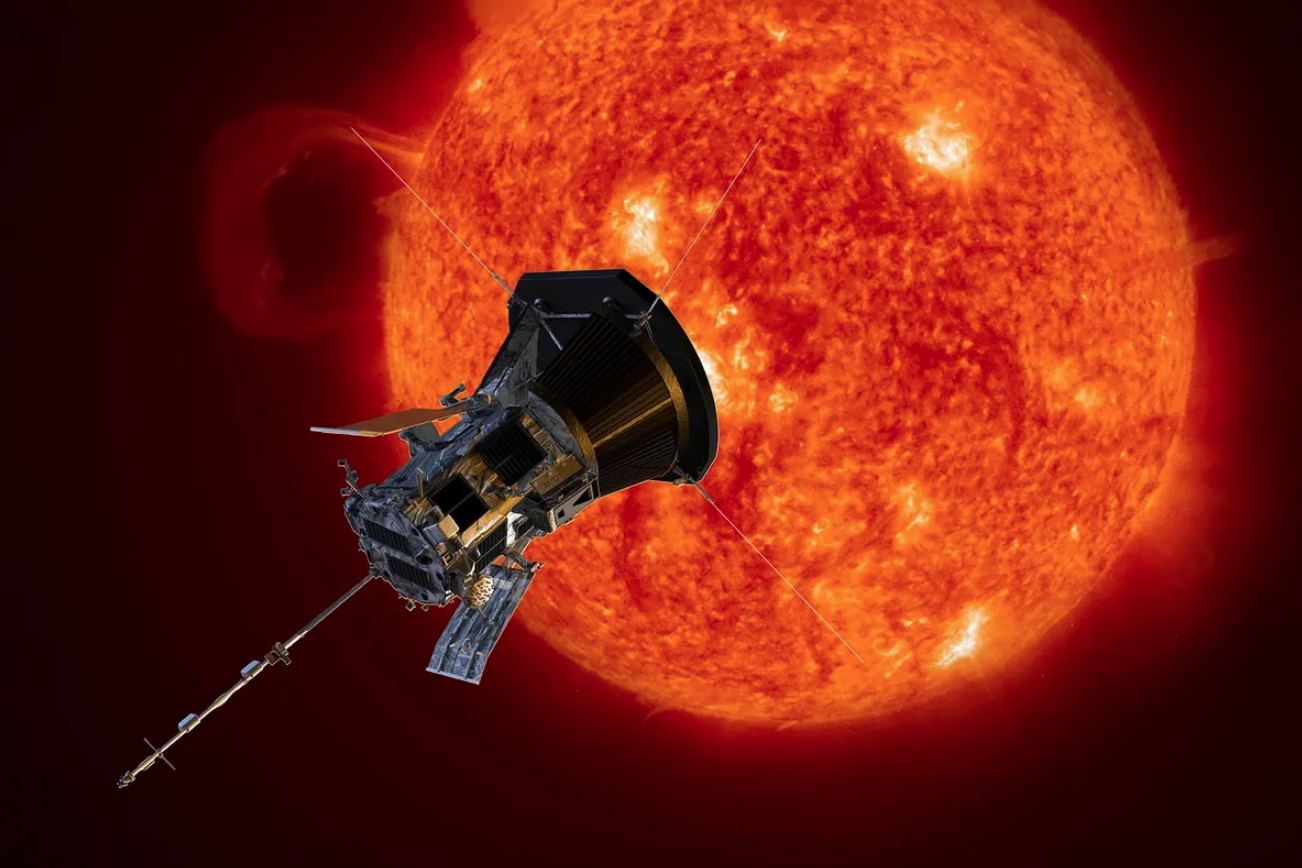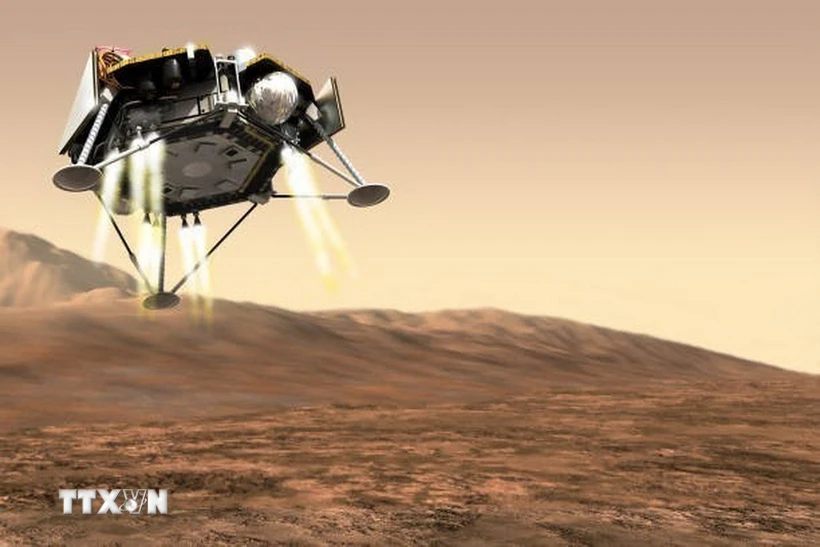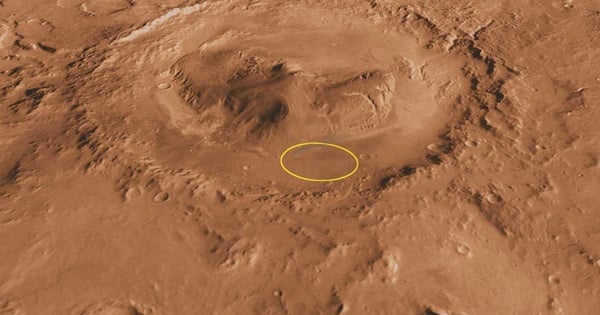The concept of touching the sun dates back to ancient Greek mythology with the character Icarus, and now scientists from the National Aeronautics and Space Administration (NASA) have turned this idea into reality through a special spacecraft.

Simulation of Parker Solar Probe spacecraft approaching the sun
Photo: NASA/Johns Hopkins APL
On December 24, the Parker Solar Probe spacecraft approached and was only about 6.1 million km from the sun, marking a new record for humanity.
The spacecraft, about the size of a small car, is now the closest man-made object to the sun. Parker Solar Probe was launched on August 12, 2018.
"Traveling at speeds of up to 430,000 miles per hour, the spacecraft will endure temperatures of 2,000 degrees Fahrenheit (982 degrees Celsius) in the outermost region of the sun's atmosphere called the corona to help scientists learn more about our star," CNN quoted the NASA team behind the project as saying.
If traveling at the same speed in the US, it would take the spacecraft only 20 seconds to travel from Los Angeles (California) to New York City (New York).
This is the 22nd time Parker Solar Probe has been close to the sun. According to program manager Arik Posner, solar explorations are part of NASA's larger ambition to push new frontiers in space exploration.
"This is an example of NASA's challenging missions, doing things that have never been done before to answer long-standing questions about our universe," Earth.com quoted Mr. Posner.
Because the spacecraft is now so close to the sun, scientists have been unable to establish contact with the spacecraft. They hope to receive a signal on December 27 to confirm that the spacecraft is still alive.
Source: https://thanhnien.vn/tau-vu-tru-nasa-cham-vao-khi-quyen-mat-troi-185241225102401977.htm


![[Photo] Looking back at the impressive moments of the Vietnamese rescue team in Myanmar](https://vstatic.vietnam.vn/vietnam/resource/IMAGE/2025/4/11/5623ca902a934e19b604c718265249d0)


![[Photo] "Beauties" participate in the parade rehearsal at Bien Hoa airport](https://vstatic.vietnam.vn/vietnam/resource/IMAGE/2025/4/11/155502af3384431e918de0e2e585d13a)


























![[Photo] Summary of parade practice in preparation for the April 30th celebration](https://vstatic.vietnam.vn/vietnam/resource/IMAGE/2025/4/11/78cfee0f2cc045b387ff1a4362b5950f)






























































Comment (0)